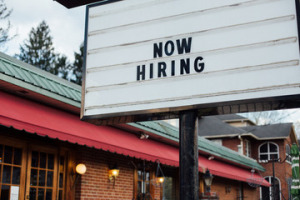
Slightly more Americans apply for unemployment benefits last week, but layoffs remain relatively low
Some analysts say they expect layoffs ordered by the Department of Government Efficiency to show up in the report in the coming weeks.

Some analysts say they expect layoffs ordered by the Department of Government Efficiency to show up in the report in the coming weeks.

Arizona-based used-car retailer Carvana says it intends to add inspection and reconditioning services at its auto auction site in Plainfield to establish what it calls a Megasite.

Most Americans still enjoy unusual job security. But for those looking for work, the job hunt has been getting harder compared with the red-hot hiring days of 2021-2023.

A Meta official said Friday that the company is “building teams with the most talented people” instead of making hiring decisions based on protected characteristics.

Taken as a whole, Tuesday’s figures suggest that the job market might be stabilizing at a modest level, with hiring moderate but layoffs uncommonly low.

The Labor Department reported Tuesday that the number of job openings dropped to 7.4 million in September from 7.9 million in August.

The rising level of continuing claims suggests that some who are receiving benefits are finding it harder to land new jobs. That could mean that demand for workers is waning, even as the economy remains strong.

Given Friday’s stronger-than-expected hiring report, economists say the Fed will almost certainly cut its benchmark rate in November by a modest quarter-point, after its larger-than-usual half-point reduction in September.

Overall, U.S. retailers are expected to add 520,000 jobs in the final quarter of this year, representing the second-lowest total since 2009.

Job openings have come down steadily since peaking at 12.2 million in March 2022, but they remain above where they stood before the coronavirus pandemic hit the American economy in early 2020.

Weekly filings for unemployment benefits, considered largely representative of layoffs, had risen moderately since May before this week’s decline.

Collectively, Friday’s figures depict a job market slowing under the pressure of high interest rates but still growing.

The number of job openings has been trending gradually down over the past year. Yet there are still roughly 1.1 job openings for every unemployed person, Wednesday’s report showed.

The unemployment rate ticked up from 4% to 4.1%, a still-low number but the highest rate since November 2021.

New research delves into hiring woes outside of low salaries, such as the lengthy bureaucratic process that can take up to 204 days to complete for federal public health jobs.

After a miniboom that powered the first quarter of 2024, the labor market cooled in April, reflecting job growth that looked more like the latter half of 2023. April’s job gains were the smallest reported since October.

Though layoffs remain at low levels, companies have been announcing more job cuts recently, mostly across technology and media.

The mother of the student is suing the district and transportation department for negligence for hiring an unfit employee.

Amid a shift in work habits prompted by the coronavirus pandemic and a squeeze in the tech industry, the downturn in hiring marks another setback in the boost Amazon had initially promised.

The unemployment rate fell to 3.8 percent last month, the Bureau of Labor Statistics reported Friday, extending the longest stretch of unemployment below 4 percent in five decades.